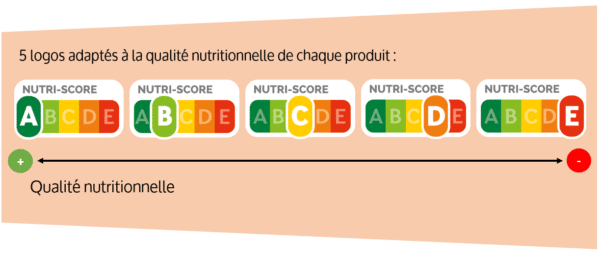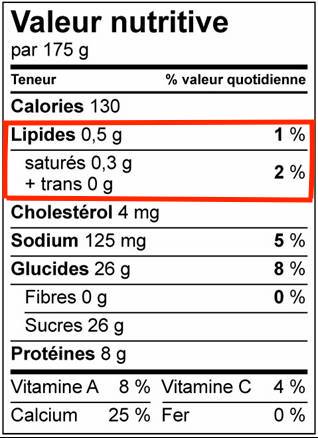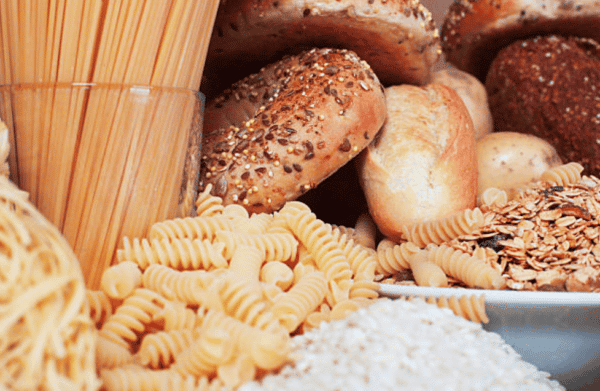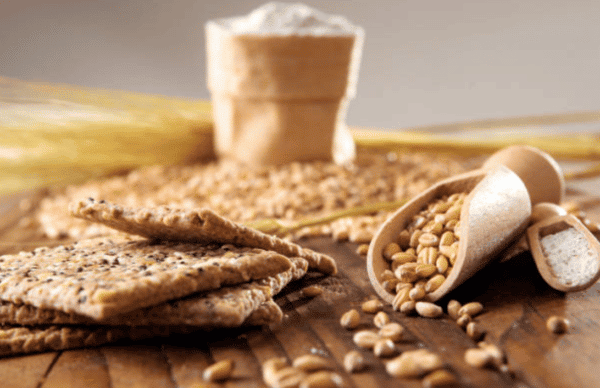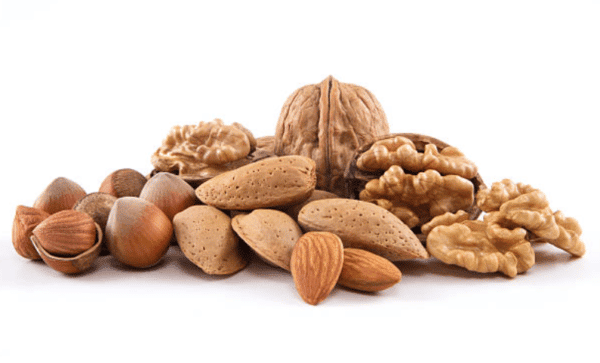Why DO WE HAVE to know how to read a NUTRITIONAL label?
Food labels are a very important source of information. Knowing how to read nutritional information is part of the reflexes to have that are essential for a balanced diet in bodybuilding. And above all, it allows us to control the number of calories we consume in accordance with our objectives when we practice bodybuilding. Whether it is for a maintenance diet, a mass gain diet or for fat loss, but also for our health. However, many of us don't know how to do it. We will therefore try to see more clearly in this article.
Understanding a food label
The Ministry of Health has passed a health law in France on the obligation to affix a food label. The objective of this device is to reach a transparency on the added ingredients, to know the nutritional information of the packaged foods and industrial products provided by the food industries that we consume.
Food safety is one of the priorities of the national program set up to help consumers eat healthily and thus fight against diet-related diseases such as obesity, cardiovascular disease, water retention and many other more or less serious ailments that would harm our health.
On each product is a small table with a color code and a letter that mentions the nutritional value of each ingredient. They go from A to E knowing that the A is green and therefore normally good and the E is red and therefore bad. This is called the Nutri-Score.
Everything is labelled and made available so that we can understand what we are putting on our plates. But in reality, how many of us bother to read a label and take an interest in what we eat? Most of today's athletes do, but it's not ingrained in our habits.
Here are a few tips on what to look for when looking at a food label on a frozen, canned or pre-packaged product, in order to get the micronutrients and macronutrients we need for our energy needs and a balanced diet.
So? how do you read food labels?
Look at the size of the ingredient list
All this information is rarely put forward by the food industry on the front of the product, so we must get used to looking for it. And if we don't do it, it's essentially for 2 reasons: the first, we don't have the time and the second, we take the food that makes us want to.
A balanced diet requires foods with the shortest possible list of ingredients so that there are not too many sweeteners, preservatives, processed ingredients and added sugar and salt. Present among other things in prepared meals, they are real endocrine disruptors leading to cardiovascular diseases, food allergies and gastric problems.
The ingredients
The ingredients on the label are listed in small order of quantity. There may also be all the preservatives, sweeteners, additives, texturizing agents, different sugars and other components. It is when you read it that you may realize that a chocolate food, for example, contains as much or more sugar than chocolate.
Always choose nutrients with a short ingredient list, as the longer the list, the more certain we can be that processed ingredients have been added.
The order of the ingredients is decisive because they are listed in descending order of quantity. If, for example, sugar is at the top of the list, it is better to put a cross on the product.
Nutritional values
On your label, it includes all the values below.
Calories
Calories are units that measure the amount of energy in the food we eat. When we eat, the number of daily calories must be respected.
For those who want to avoid gaining weight and therefore fat, or when you are on a diet (loss of fat), it is advisable to choose food products that are not excessive in value and that are rich in fiber and low in fat.
On the label, it is listed as the energy value with a column for the whole food and another column with the value for a given portion.
Need to know your calories and macros to consume?
Lipids
Lipids include polyunsaturated and monounsaturated fatty acids, saturated and trans fats, which are the different fats contained in food. They can be animal or vegetable.
Polyunsaturated fatty acids: Omega 3 and 6 such as flaxseed for example are good for the cardiovascular system.
Monounsaturated fatty acids: Omega 9 such as avocado, olive oil, nuts and oilseeds for example, which control blood sugar levels.
Saturated fats: butter, cheese, pork fat, palm oil, for example, should not be consumed in excess because they increase bad cholesterol. However, we should not completely eliminate them from our diet. Indeed, our body must have a ratio of good and bad cholesterol.
Trans fats: margarines, frying oils for example. These are the worst fats that play a harmful role on bad cholesterol and triglycerides. These fats have the role of preserving food longer. We should not normally include them in our diet. It is partly because of their consumption that the risks of diseases appear.
Lipids should not exceed 30% of our diet. We should consume half of our fat intake through monounsaturated fatty acids, a quarter with polyunsaturated fatty acids and the last quarter with saturated fats.
To continue with our example of weight loss, avoid anything with a high fat content. Certain products that contain a lot of fat will cause the consumer to gain weight if he or she does not exercise and will be harmful in the long term. Whether we practice bodybuilding or not at all is the same as regards the consumption of bad fats.
On the label, it is called lipids with a small line in italics saturated or trans fats.
Carbohydrates
The function carbohydrates is to provide the body with the necessary energy. It is the fuel of our body and will be converted into glucose to fuel our muscles and heart. Most food labels display the carbohydrate content of the food, but the term carbohydrate does not differentiate between the types of sugars. Not all carbohydrates are added sugars and this is not specified on the label. Nevertheless, the athlete needs them to feed his body and to have the necessary energy during training, especially when building muscle, as many athletes cycle carbohydrates.
Carbohydrates are often converted into sugar and there are several types. There are good carbohydrates and bad ones. That is to say, low and high glycemic index carbohydrates.
On the label, it is called carbohydrate of which sugars in italics which are the added sugars.
For sportsmen, they are both essential since after training, they will privilege fast sugars.
Sugar
There are many different types of sugars, but again, the food label will not tell you the type. For example, a plant may contain sugar called sucrose which comes naturally from the plant, while glucose syrup is added sugar. Just like sweetened drinks or soft drinks that contain added quick sugar.
Manufacturers are not necessarily clear about the distinction between natural and added sugar, which can lead to the consumption of a product that explodes blood sugar levels.
In any case, it will be necessary to consume foods that contain as little sugar as possible. Indeed, sugar brings calories containing neither fibres, nor vitamins and minerals thus little interesting.
When you see on a label "low in sugar" it means that it contains 30 % less sugar than a product of the same range. So it doesn't necessarily mean that it is not very sweet. This is one of the traps to avoid.
Often low-sugar products contain more fat, and vice versa, which is not necessarily interesting.
An alternative to sugar: Sweeteners such as stevia or aspartame. Some foods will be composed of them.
On the label, they are found under the carbohydrates written in italics: of which sugars
To know the difference, read this article: What are the differences between carbohydrates and sugars?
Proteins
Proteins have a major role for the body. They help growth, repair muscle tissue and fibers, strengthen the skin, nails and also the immune system. In bodybuilding, they are very important for the supply of amino acids that builds muscle. But many people think wrongly that consuming more than they need has no impact. In reality, they are just as fattening if you over consume them, just like carbohydrates or fats. If you eat more than you need, you will exceed your daily calorie count and macros.
There are proteins If the product contains both animal and vegetable proteins, each label will indicate the amount of protein contained in the product. Tofu, for example, contains vegetable protein, while preparations such as minced steaks contain animal protein.
This type of intake is usually well written on the label with the name protein.
Sodium
Sodium is a mineral salt that is essential for muscle contraction.
Just like trans fats, industrialists abuse it and use it to preserve food. The more we eat dishes full of salt and sugar, the more we find the taste bland when we cook. It is also responsible for some cardiovascular diseases.
You need to consume about 5 grams of salt per day, which is about 2 grams of sodium. However, sportsmen and women who sweat lose more mineral salts. They therefore need a higher intake than people who do not practice sports.
Here again, manufacturers often give the sodium content as a percentage, which is obviously complicated to calculate.
On the label, there can be both: salt or sodium which do not have the same values as mentioned above.
The fibres
There are two types of fiber: soluble and insoluble. One will reduce blood sugar and cholesterol and the other increases the volume of faeces (thanks to the water) and regulates intestinal transit in particular. They are very good for health and here is the adequate consumption:
For a man between 19 and 50 years old, the ideal intake is 38 grams per day
For a woman aged 19 to 50: 25 grams per day
Foods high in fibre are generally whole grain cereals such as brown rice for example, but also fruits such as apples and prunes, of course all vegetables such as cabbage, broccoli or artichoke, legumes, and dried fruits.
So, whether you are a sportsman or not, give priority to a maximum amount of fibre in your diet.
On the label, it is called fibre.
Vitamins and minerals are good for your health.
How to choose the right foods?
Each shopping session is important for our health, we must take into account the labeling of products in order to eat a balanced diet and avoid harmful ingredients in the finished products, which may contain allergens and later lead to food intolerances.
Products that are too sweet, too salty or contain saturated or trans fats are obviously bad for the body and can lead to diabetes or other diseases in the long term.
For a healthy diet in our plates and a good balance, the nutritional advice is to have a food behavior privileging natural products, because the less processed ingredients the better.
A few decades ago it was easier to eat healthy because natural foods were the norm. Fortunately it is still possible to have a varied diet if you are a little careful.
To be fit and keep the weight off, simply check the label, calculate your intake and the number of calories per day you need, and exercise.
What healthy foods to choose?
OilseedsIn addition, we need to buy natural foods, such as legumes, fresh fruits and vegetables, dried vegetables, cooked vegetables (many of which contain antioxidants), dried fruits, brown rice, brown rice, dried fruits, fatty fish which contain omega-3 fatty acids that are good for our health, red meat in moderate quantities or white meat, and fresh foods rich in fiber. The list of added ingredients, such as food additives, is thus almost non-existent. It is therefore important to choose the least processed foods possible and to have a sufficient amount of fibre.
Among the food groups, fibre is to be preferred, choose those with whole grains, such as oatmeal, wholemeal bread, without forgetting dried fruits and peanuts. To be in good shape, eat whole grains rich in essential fatty acids and selenium, such as peanuts or Brazil nuts.
Some foods in food packages are nutritious foods that taste great but make people obese because their nutritional value is not what the body is looking for, with lots of saturated fatty acids, sugary products, complex carbohydrates as well as trans fatty acids, they insidiously destroy our health.
They come from food industries that market these products without respecting the standards of health nutrition. You bring damage on the metabolic level, as thyroid disruptors, the cardio vascular system is gradually clogged because of bad cholesterol and are in no way part of a healthy diet. They are manufactured at a lower cost because the consumer is always looking to pay less but unfortunately, these products are not good for our health when we abuse them.
Processed food generally contains a lot of fat, carbohydrates, cholesterol and sodium. All these ingredients are part of our daily life and to know how to adopt good habits for our health, to use them in small quantities during each meal is the guarantee of a good health and to avoid diabetic problems and cardiovascular diseases.
You can learn to have good eating habits
Good eating habits start with eating as low-calorie and natural as possible. A healthy diet requires knowledge of one's BMI, which is the body mass index, as well as the number of calories per day that we need.
It is better to cook yourself a homemade meal with fresh vegetables than to buy a dish cooked with processed food with the addition of too much salt and too much sugar and sometimes even dyes or other.... Of course, it takes a little more time to prepare but it is just a habit to get into because the result will be much better in terms of taste and your health will be better.
Need calibrated nutrition?
Beware of the danger of food additives for people with allergies
For people with allergies, it is better to avoid any food with additives, because the traceability of each added ingredient is not easy to know, it is better not to venture into this field.
A gluten-free diet is also possible for those who are allergic, in which case it is advisable to know the origin of the product and its composition before buying it.
Lactose can also cause complications for people with allergies, due to the lactic acidifying agents in it. You can find alternatives to lactose-free dairy products such as almond milk.
Sulphite in alcoholic beverages such as wine can also cause asthma problems.
How important is it to choose the right foods for bodybuilding?
When it comes to bodybuilding, the choice of food differs because the nutritional and energy requirements are different.
We need any product made up of proteins whose nutritional value can increase the volume of the muscles which is a food to be taken into consideration.
Any food rich in mineral salts is good for high-level athletes: dairy products, foods rich in fructose and lipids are recommended for athletes who will immediately spend all these calories during their training.
The energy expended per kj will have to be quickly compensated by food rich in essential nutrients, but also in vitamin A, vitamin B (vitamin B 9 is also called folic acid), vitamin E and vitamin D.
The rations must be well proportioned to be able to compensate for the number of calories expended, whether it is for a mass gain diet or for a dry run.
It is especially after your training that you should eat sweet foods or fresh fruit with a sweet taste that contain fast sugars, including the glycemic index is high and has a high energy value. Avoiding hypoglycemia, but also oilseeds like almonds, rich in vitamins and minerals.
To conclude
With all these indications and advice, we now know how to read a food label. It's a bit complicated at first, but as you get used to it, it will become a reflex. However, good food is generally a little more expensive than industrial food but not always if you know how to read a label well.
We can now know which foods or food products to choose, whose nutritional content would best meet our daily energy needs while promoting balanced meals and keeping our diet as healthy as possible.
Don't hesitate to ask for advice from a professional who will be able to advise you on the foods per kcal to consume in relation to your weight while eating with satiety. My training allows me to offer you a personalized diet follow-up with exactness including your calories and macros according to your objectives accompanied by advice that will allow you to eat better.
A final nutrition tip for being healthy and eating right to lose weight is not necessarily to eat less, but to eat better.
Finally, you should know that these habits are obviously important to inculcate in our children who, from a very young age, are taken in by visually coloured foods with animals appearing on the packaging which are in fact full of sugar, such as morning cereals or even the famous spread we all know.
We live in a world where industrialists have taken a huge place in our supermarkets at the expense of our health.
So after reading this article, it's time to understand what you're putting on your plate.
Other articles to read :
How to calculate your body fat percentage?
How important is it to be well hydrated in bodybuilding?

